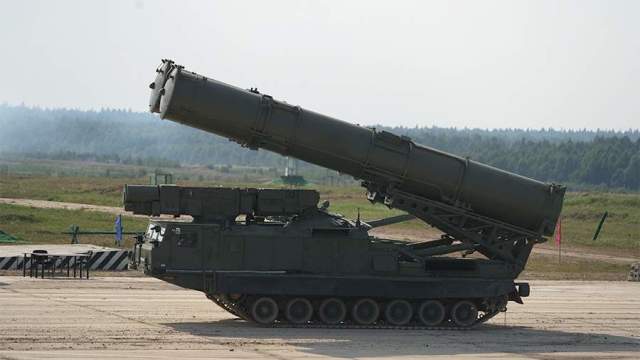Russian air defense systems have already adapted to the new ATACMS missiles recently transferred by the United States to Ukraine, as they coincide in many characteristics with the Tochka-U missiles developed during the Soviet period. On Wednesday, October 18, military historian, director of the Museum of Air Defense Forces Yuri Knutov told Izvestia about this.
"Ukraine uses these weapons of destruction to attack civilians, and therefore Berdyansk was shelled. But, since our air defense has repeatedly shot down Tochka-U missiles, the complexes coped well with the task here," he said.
Knutov explained that the peculiarity of the flight of these missiles is that they fly along a ballistic trajectory. On the one hand, these trajectories are predictable and air defense systems are able to calculate the meeting point fairly accurately, but on the other hand, the missile can rise to a sufficiently high altitude, where not every anti-aircraft missile system can cope with the defeat of the ATACMS missile. Therefore, it is necessary to intercept on a descending trajectory, where the speed of the rocket increases, he noted.
"At one time, Buk-M3 anti-aircraft missile systems coped with such tasks best of all. But today we also have the S-300V4, S-300PM2, and S-400 complexes. At one time, the software was finalized and even "Shells" were fired at the Tochka-U complexes," the military historian said.
In addition, Knutov drew attention to the fact that the first attacks with ATACMS missiles began not at military facilities, but at civilian ones. This, according to him, speaks about the tactics of terror carried out by the Kiev regime and supported by Washington.
Earlier, on October 17, it became known that the White House confirmed the transfer of ATACMS missiles with a range of 165 km to Ukraine. The press service of the National Security Council of the White House noted that this would increase the combat potential of Kiev, while the Pentagon could not confirm further deliveries of ATACMS.
On the same day, The Wall Street Journal reported that a small number of ATACMS had been secretly sent to Ukraine in recent days. The AP agency clarified that Kiev received missiles with a cluster warhead. When fired, the ammunition opens, releasing hundreds of bombs. The missiles have a shorter flight range than the maximum possible 300 km.
CNN noted that by secretly supplying long-range ATACMS missiles to Ukraine, the United States hoped to catch Russia by surprise. Since Washington usually announces arms supplies to Ukraine, however, in some cases it does not disclose this information, as it did with HARM missiles.
Earlier on Tuesday, The Wall Street Journal newspaper reported that the Armed Forces of Ukraine (AFU) struck the first blow with an American long-range ATACMS missile. On the same day, the deputy of the Verkhovna Rada Alexey Goncharenko said that Ukraine used ATACMS missiles in the attack on Berdyansk in the Zaporozhye region. At the same time, Izvestia had footage of the wreckage of an American ATACMS missile shot down in its zone.
In early October, retired Colonel Anatoly Matviychuk, a former special forces officer, said in a conversation with Izvestia that ATACMS missiles, even if they were transferred to Kiev, would not give the AFU an advantage on the battlefield.
Western countries have increased military and financial support for Kiev against the background of the Russian Federation's special operation to protect Donbass, which was announced on February 24, 2022 by Russian leader Vladimir Putin after the situation in the region worsened due to shelling by the Ukrainian military.

